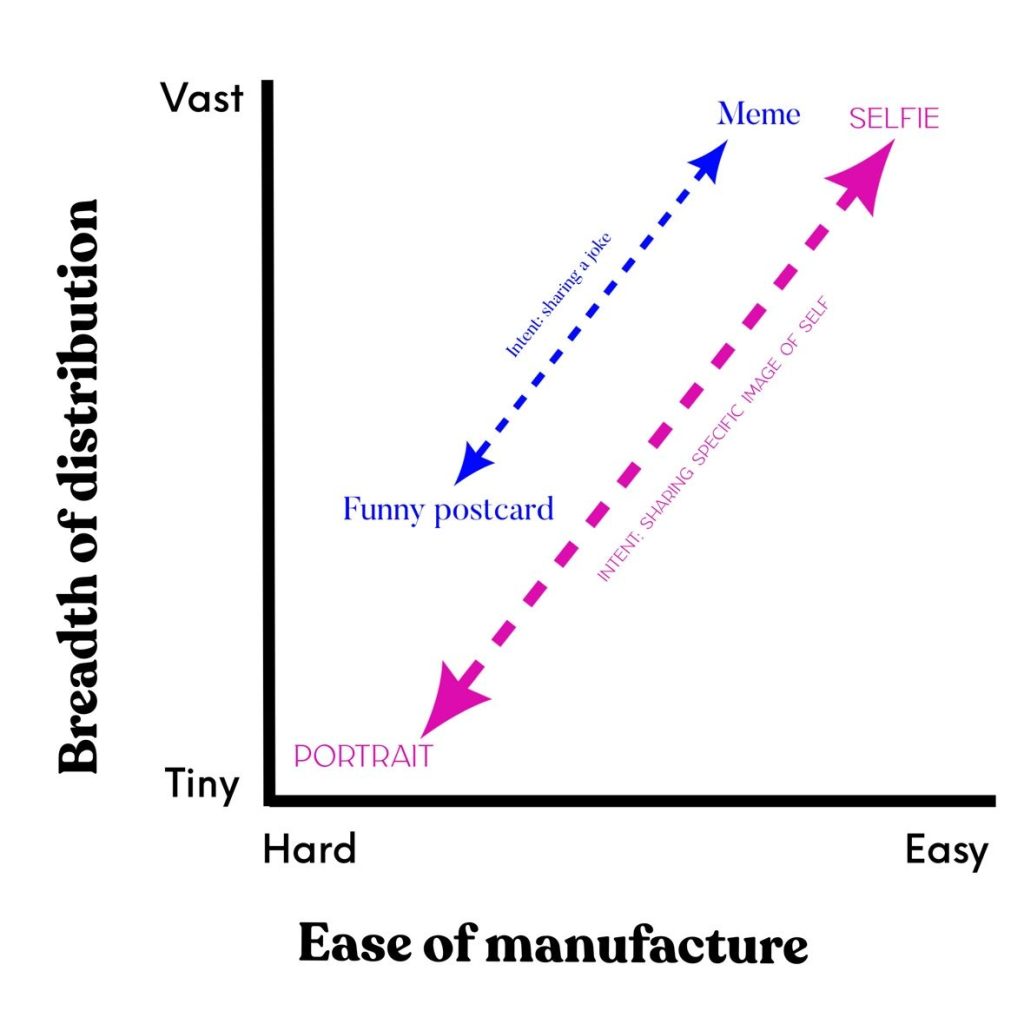This is a post about sharing images and text as something humans have done for centuries for personal wellbeing. The current period has led to greater capacity to make and share but the underlying intent is deeply embedded into humans and their societies.
This is a sketch diagram I wrote last night simply to connect modern and past experiences of making art and writing text. It is a fairly obvious artefact. Selfies connect backwards to portraits. The change is twofold. There is the ease of manufacture of image. Photography is much easier than oil painting. Also there is the ease of distribution. A selfie can be spread in multiple copies across many networks almost instantly.

The human intent, rather than the technology, is what underlies things.
The ability to create a realistic picture of self was held back for centuries by the difficulty of creation. Photography shifted that.
The ability to share jokes was held back by lack of distribution infrastructure or cost for years. The postal system shifted that and the internet smashed the barrier.
The social intents remained the same tho.
TikTok and revolution
I’ve been reading book on culture of protest in pre-revolution Paris called The Revolutionary Temper by Robert Darnton. He is showing how poets and songwriters used popular music to transfer news and ideas. About 12 tunes were known across Paris (from romance songs to drinking songs) and these were used with new lyrics to talk about the King, the wars, taxes and more.
It is as close to 18th century TikTok as you can imagine.
The intent is the same, the human art is the same, the technology of making and distribution shifts.
Sharing for wellbeing
Why do humans want to share? Generally, creatures are interested, at base, in a communal urge to procreate and continue the biological existence of their type. That is however, not enough when talking of humans and of individuals.
1) People want to share proof of their self-existence.
This is visible in cliff and cave art of hands held against the wall and pigment blown around it.
2) People want proof of social connection of self.
This visible in jokes and graffiti as much as books and songs.
Staying human
Those two intents are crucial and turn up in memory work too.
The need to be known and be present is visible in anecdotes. Older people can lose capacity to hold new memories and to recall established ones. In particular, the latter is why anecdotes become important.
Anecdotes are pre-assembled stories of memories. Unlike recall in earlier life, the sensory and emotional sense of recall are not painted in from current visceral experience. It is a package. It needs to be a package because the brain function is impaired and recall and reassembly is harder.
What that difficulty is visible as is a person um’ing and er’ing, looking a bit vacant and delaying their conversational participation. That delay in being your self in your social group is harmful. We want to be individuals in communities. Anecdotes are the solution. A quick to recall and retell memory that enables a person to prove their self-existence and their social-existence. The fact that the anecdote is repeated so often is not the point. It is ability to be present that matters.